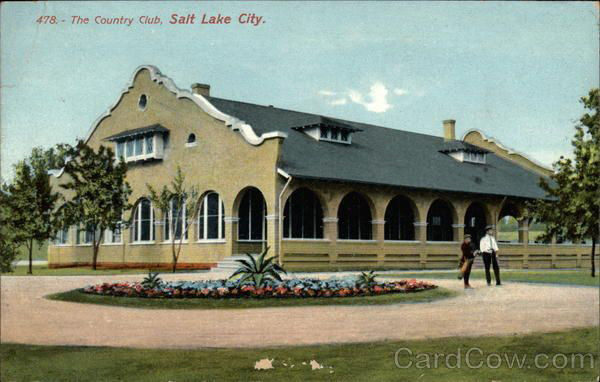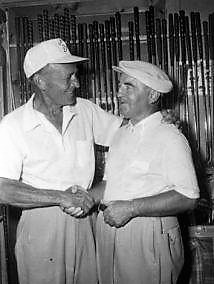Synopsis of the Project
The History of Golf in Utah mirrors that of the Nation in general with two essential and noteworthy caveats.
The duality of the sport and bifurcation of rules. And why are Golf Courses built and for whom?
The dichotomy of the question is, do we play Golf for recreation or competition?
Golf, as a game, was reported to have been played in America as early as the late eighteenth century. It was not until the organization of the United States Golf Association in 1894 that Golf in America became standardized as we know it today. The USGA started with five founding clubs, and its stated purpose as written in the History of the USGA was to “promote the interests of the game of Golf, to promulgate a code of rules for the game, to hold annual meetings at which competitions shall be conducted for the amateur and open championships in the United States.
However, more than a competitive enterprise, Golf’s growth, approval, and acceptance in Utah have much to do with the LDS church’s attitude towards play, sport, and exercise, in general. Mormon scriptures preach physical movement and healthy lifestyles as revered commandments. Golf, at its core, became another component, another utilitarian endeavor where groups and families could participate in wholesome, outdoor, leisure activities.
For the most part, golf courses in rural Utah are practical, no-frills public facilities intended for the local population. When you see a Mormon Ward House with its gymnasium and cultural hall in small Utah cities and towns, chances are a park is attached. And, somewhere close by, there is also a golf course owned and operated by the community.
This explains, while almost thirty million people play Golf in the United States on the approximately 15,500 golf courses in America, Utah has the highest percentage, by an overwhelming number, of municipal courses open for public play per capita in the entire country, 16% of the golf courses nationally versus 62% of courses in Utah owned by cities and towns.
When Mormon pioneers fleeing religious persecution first entered the Salt Lake Valley, Utah was a clean slate. No one played Golf, and there were no golf courses. In fact, there was not much of anything. Recreation was nonexistent.
Indigenous tribes of Native Americans had largely left the area leaving the hardscrabble settlers to fend for themselves. With little more than what they could carry on their backs, these early pioneers arrived in the Great Salt Lake Basin scrapping for food, shelter, and the necessities of life.
That soon changed. Six months after Brigham Young led the migration into the greater Salt Lake Valley and the winter snows had cleared, he sent his envoys throughout the region to explore and colonize potential settlements, with the directive “Go forth and prosper.” When dwellers became established, those hardy pioneers first built a church to worship, a cemetery to mourn and bury their dead, and a public park where residents could recreate and gather socially.
When Golf, introduced in the early part of the 20th century, gained popularity and the likes of Bobby Jones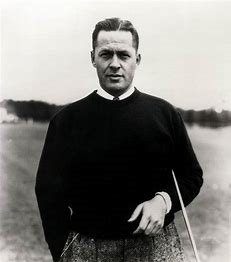 and locally, George Von Elm brought national exposure to the sport, it was only natural for communities to add a golf course to their recreational areas, usually designed, hand-built, maintained, financed, and operated by the local population, which in some measure explains all the quirky, idiosyncratic, modest nine-hole golf courses located throughout the state.
and locally, George Von Elm brought national exposure to the sport, it was only natural for communities to add a golf course to their recreational areas, usually designed, hand-built, maintained, financed, and operated by the local population, which in some measure explains all the quirky, idiosyncratic, modest nine-hole golf courses located throughout the state.
By 1900, there were almost 1000 golf courses in the United States. Most of these were private country clubs that excluded the average citizen. There were few public courses, including the first public course in America, Van Cortland Park, New York. However, most of the golf courses in America at that time were private country clubs. For the most part, participants were successful business people and their families. Golf was a game enjoyed as a diversion from daily life, much like hunting, riding, tennis, or other leisure pursuits of the wealthy and elite social classes.
When Utah became a state in 1896, its first golf course was private.
The Salt Lake Country Club, incorporated on October 2, 1899, became the first permanent golf course built between the Mississippi River and California.
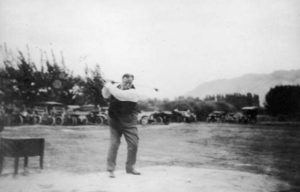 President William Howard Taft at the Grand Opening of the Salt Lake Country Club Independence Day 1906
President William Howard Taft at the Grand Opening of the Salt Lake Country Club Independence Day 1906
It was initially located on Gilmer Drive (1300 East 900 South) near the current East High School. In 1905, the Club relocated to the Forest Dale location at 900 East 2500 South and constructed the first clubhouse explicitly built for Golf, which still stands today.
Utah’s second golf course, Nibley Park, was purchased by Charles W. Nibley, a wealthy Utah industrialist and Presiding Bishop of the LDS Church, on Christmas Day, 1921, and deeded to Salt Lake City with the stipulation that it would remain a public golf course in perpetuity.
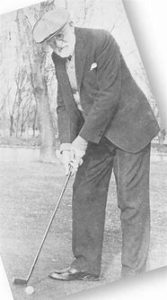 The course, constructed on the remnants of Wandamere Park, is the oldest municipal course in Utah and was a gift, never to be sold, to the city’s general public, both rich and poor, to enjoy the game of Golf.
The course, constructed on the remnants of Wandamere Park, is the oldest municipal course in Utah and was a gift, never to be sold, to the city’s general public, both rich and poor, to enjoy the game of Golf.
Charles W. Nibley
This generous and honorable gesture began an existential pattern of equalitarianism that would continue, laying a foundation statewide for the creation and construction of public golf courses in Utah and the blurring of social equality, impartiality, and tolerance in the public perception, involvement, and participation in the game of Golf.
Projective Objectives
This Documentary will describe how Golf grew and expanded beyond its smalltown, rural county townships and became a recreational pastime for everybody in Utah by providing the three pillars of participation; Acceptance, Access, and Means.
This project will showcase the creation, spread, and diversity of public golf courses in the state, from the scenic red rocks of the southern canyonlands to the pristine and unsullied atmosphere of high mountain valleys that shadow the Rocky Mountains and the parkland panoramas of suburban municipalities.
This proposal will establish how Golf has proliferated and grown from the backwater oases of its humble beginnings to picturesque masterpieces of architectural designs that showcase the state’s historical and cultural heritage.
This narrative will clarify how Golf in Utah became more than entertainment, a muse of the indulgent and privileged leisure class, and became a universal model on how municipal Golf could become a utilitarian social experience, embracing recreation and the outdoors as a social calling, a reason to play, and a game meant to be fun.
To be enjoyed by all who wished to play not just as a business-related private entity meant for wealthy, privileged, social elites.
And, finally, this account will chronicle those stories and Utah’s enormous share of Golf’s history.
Project Description
This Documentary will be written, produced, filmed as individual segments, published, and presented as episodes on the Rocky Mountain Golf Network’s weekly Blog/Podcast, “Talking Golf With The Golf Guy,” broadcasted on selected Social Media Platforms and distributed globally on syndicated Podcast outlets around the World.
broadcasted on selected Social Media Platforms and distributed globally on syndicated Podcast outlets around the World.
These segments will be edited, compiled, and packaged into a comprehensive, multi-hour presentation highlighting the history of Golf in Utah. This extensive production will educate and inform the public on the unique, historical, and enormous impact and significance of Golf’s influence on Utah’s culture, history, and industry.
Video Style and Method
The video format will be developed and produced as a ‘Ken Burns Effect’ production applying Zoom, Pan, Fade, and Transitions while combining still historical photographs with filmed interviews of notable subjects.
Mick Riley-Nibley Parks First Golf Professional
Project Timeline & Action Schedule
- January 2022
- Research
- Archives
- Utah Historial Society
- Documentation
- February 2022
- Film Interviews
- Live interviews with notables
- March 2022
- Podcasts begin airing
- April 2022
- Masters Kickoff
- 100 years Nibley Park Cenntinal
- May thru November 2022
- Podcasts continue airing
- Research continues
- December 2022
- Post Production
- Presentation-Part One
Episode Outline
Part One-In the Beginning
Episode 1. The Early Days of Golf
Episode 2 The Mormon Migration.
Episode 3 The Colonization of Utah
Episode 4 The Golden Era of Golf
Episode 5 Calder Park
Episode 6 The Salt Lake Country Club
Episode 7 Nibley Park
Project Production and Management Principal
This Documentary will be produced and directed by Jeff Waters and his LLC, Rocky Mountain Productions.
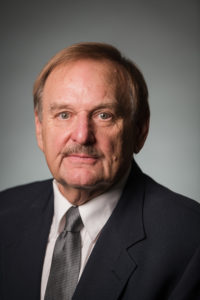
About
 Jeff Waters is one of the most accomplished Golf Professionals in America. He is a fully certified, trained, and acredited PGA Master Professional joining an exceedingly small and elite group of Golf Professionals in the United States to have achieved this prestigious title.
Jeff Waters is one of the most accomplished Golf Professionals in America. He is a fully certified, trained, and acredited PGA Master Professional joining an exceedingly small and elite group of Golf Professionals in the United States to have achieved this prestigious title.
He has almost 50 years of experience in the business of Golf, including ten years of playing the game at all levels; 10 years as a Head Golf Professional overseeing all aspects of the total golf course operation; three years as Director of Player Development for Salt Lake County Parks and Recreation, administering and managing multiple golf course programs and activities.
And for the past 30 years has been President and CEO of his own golf management company, Rocky Mountain Golf Enterprises (RMG), a Utah registered and licensed business that offers golf-related services throughout the Rocky 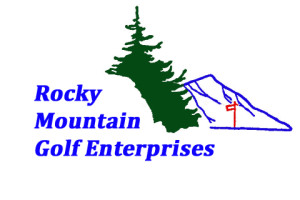 Mountain market.
Mountain market.
A well-known golf writer, Jeff Waters, has been active in print and broadcast media from an early age. His articles and instruction features’ regularly appear in the print media. He has authored two golf instruction books: “The Ten Commandments of Golf, Proven Principles That Make Your Golf Game Better,” And “The Short Game, the Transition from the Golf Course to the Putting Green.”
 Both are available as e-book downloads and on Amazon.
Both are available as e-book downloads and on Amazon.
He penned his first short story while still in his teens and has since published 100’s of articles, essays, and instruction pieces in magazines, blogs, internet forums, and other platforms. He is the author of multiple books, numerous stories, and countless reviews of other writers’ publications.
Jeff began his broadcasting career in High School and has had a constant presence in sports journalism throughout the years, providing play-by-play and color commentary at many different levels, including football, baseball, basketball, and Golf, while performing on other sports media platforms as well.
He has provided the vocal narration for hundreds of voice-overs, commercials, radio programming, sports interviews, tournament updates, blogs, podcasts, audiobooks, and video productions, including the original voice work on the best-selling X-Box Links golf game.
Jeff also voiced and contributed to the audiobook’s narration, 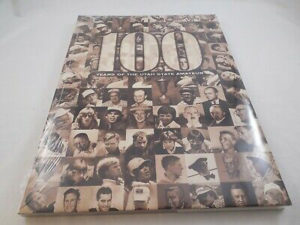 “One Hundred Years of the Utah State Amateur,” available on iTunes.
“One Hundred Years of the Utah State Amateur,” available on iTunes.
Waters has produced, directed, and distributed numerous film and video productions as, either stand-alone presentations or incorporated them within his blog and national podcasts. All are available for review on YouTube.
Known as “The Voice of Golf” and “The Golf Guy” throughout the Intermountain West, Jeff is regularly sought out for his advice and counsel. He speaks to groups often on golf-related subjects.
Contact Information
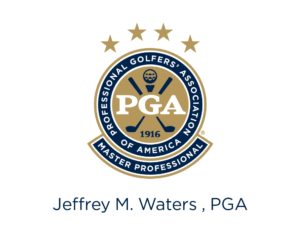 You may contact Jeff by phone at (801) 557-6110, on the Internet at his e-mail address: jeffgolfguy@att.net, like him on Facebook, follow him on Twitter, download his website, or interact on his blog, podcast, and YouTube all at www.jeffgolfguy.com.
You may contact Jeff by phone at (801) 557-6110, on the Internet at his e-mail address: jeffgolfguy@att.net, like him on Facebook, follow him on Twitter, download his website, or interact on his blog, podcast, and YouTube all at www.jeffgolfguy.com.
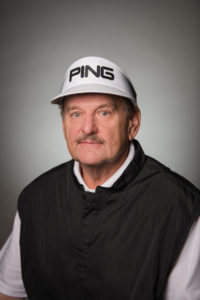
Synopsis of the Project
The History of Golf in Utah mirrors that of the Nation in general with two essential and noteworthy caveats.
The duality of the sport and bifurcation of rules. And why are Golf Courses built and for whom?
The dichotomy of the question is, do we play Golf for recreation or competition?
Golf, as a game, was reported to have been played in America as early as the late eighteenth century. It was not until the organization of the United States Golf Association in 1894 that Golf in America became standardized as we know it today. The USGA started with five founding clubs, and its stated purpose as written in the History of the USGA was to “promote the interests of the game of Golf, to promulgate a code of rules for the game, to hold annual meetings at which competitions shall be conducted for the amateur and open championships in the United States.
However, more than a competitive enterprise, Golf’s growth, approval, and acceptance in Utah have much to do with the LDS church’s attitude towards play, sport, and exercise, in general. Mormon scriptures preach physical movement and healthy lifestyles as revered commandments. Golf, at its core, became another component, another utilitarian endeavor where groups and families could participate in wholesome, outdoor, leisure activities.
For the most part, golf courses in rural Utah are practical, no-frills public facilities intended for the local population. When you see a Mormon Ward House with its gymnasium and cultural hall in small Utah cities and towns, chances are a park is attached. And, somewhere close by, there is also a golf course owned and operated by the community.
This explains, while almost thirty million people play Golf in the United States on the approximately 15,500 golf courses in America, Utah has the highest percentage, by an overwhelming number, of municipal courses open for public play per capita in the entire country, 16% of the golf courses nationally versus 62% of courses in Utah owned by cities and towns.
When Mormon pioneers fleeing religious persecution first entered the Salt Lake Valley, Utah was a clean slate. No one played Golf, and there were no golf courses. In fact, there was not much of anything. Recreation was nonexistent.
Indigenous tribes of Native Americans had largely left the area leaving the hardscrabble settlers to fend for themselves. With little more than what they could carry on their backs, these early pioneers arrived in the Great Salt Lake Basin scrapping for food, shelter, and the necessities of life.
That soon changed. Six months after Brigham Young led the migration into the greater Salt Lake Valley and the winter snows had cleared, he sent his envoys throughout the region to explore and colonize potential settlements, with the directive “Go forth and prosper.” When dwellers became established, those hardy pioneers first built a church to worship, a cemetery to mourn and bury their dead, and a public park where residents could recreate and gather socially.
When Golf, introduced in the early part of the 20th century, gained popularity and the likes of Bobby Jones and locally, George Von Elm brought national exposure to the sport, it was only natural for communities to add a golf course to their recreational areas, usually designed, hand-built, maintained, financed, and operated by the local population, which in some measure explains all the quirky, idiosyncratic, modest nine-hole golf courses located throughout the state.
and locally, George Von Elm brought national exposure to the sport, it was only natural for communities to add a golf course to their recreational areas, usually designed, hand-built, maintained, financed, and operated by the local population, which in some measure explains all the quirky, idiosyncratic, modest nine-hole golf courses located throughout the state.
By 1900, there were almost 1000 golf courses in the United States. Most of these were private country clubs that excluded the average citizen. There were few public courses, including the first public course in America, Van Cortland Park, New York. However, most of the golf courses in America at that time were private country clubs. For the most part, participants were successful business people and their families. Golf was a game enjoyed as a diversion from daily life, much like hunting, riding, tennis, or other leisure pursuits of the wealthy and elite social classes.
When Utah became a state in 1896, its first golf course was private.
The Salt Lake Country Club, incorporated on October 2, 1899, became the first permanent golf course built between the Mississippi River and California.
 President William Howard Taft at the Grand Opening of the Salt Lake Country Club Independence Day 1906
President William Howard Taft at the Grand Opening of the Salt Lake Country Club Independence Day 1906
It was initially located on Gilmer Drive (1300 East 900 South) near the current East High School. In 1905, the Club relocated to the Forest Dale location at 900 East 2500 South and constructed the first clubhouse explicitly built for Golf, which still stands today.
Utah’s second golf course, Nibley Park, was purchased by Charles W. Nibley, a wealthy Utah industrialist and Presiding Bishop of the LDS Church, on Christmas Day, 1921, and deeded to Salt Lake City with the stipulation that it would remain a public golf course in perpetuity.
 The course, constructed on the remnants of Wandamere Park, is the oldest municipal course in Utah and was a gift, never to be sold, to the city’s general public, both rich and poor, to enjoy the game of Golf.
The course, constructed on the remnants of Wandamere Park, is the oldest municipal course in Utah and was a gift, never to be sold, to the city’s general public, both rich and poor, to enjoy the game of Golf.
Charles W. Nibley
This generous and honorable gesture began an existential pattern of equalitarianism that would continue, laying a foundation statewide for the creation and construction of public golf courses in Utah and the blurring of social equality, impartiality, and tolerance in the public perception, involvement, and participation in the game of Golf.
Projective Objectives
This Documentary will describe how Golf grew and expanded beyond its smalltown, rural county townships and became a recreational pastime for everybody in Utah by providing the three pillars of participation; Acceptance, Access, and Means.
This project will showcase the creation, spread, and diversity of public golf courses in the state, from the scenic red rocks of the southern canyonlands to the pristine and unsullied atmosphere of high mountain valleys that shadow the Rocky Mountains and the parkland panoramas of suburban municipalities.
This proposal will establish how Golf has proliferated and grown from the backwater oases of its humble beginnings to picturesque masterpieces of architectural designs that showcase the state’s historical and cultural heritage.
This narrative will clarify how Golf in Utah became more than entertainment, a muse of the indulgent and privileged leisure class, and became a universal model on how municipal Golf could become a utilitarian social experience, embracing recreation and the outdoors as a social calling, a reason to play, and a game meant to be fun.
To be enjoyed by all who wished to play not just as a business-related private entity meant for wealthy, privileged, social elites.
And, finally, this account will chronicle those stories and Utah’s enormous share of Golf’s history.
Project Description
This Documentary will be written, produced, filmed as individual segments, published, and presented as episodes on the Rocky Mountain Golf Network’s weekly Blog/Podcast, “Talking Golf With The Golf Guy,” broadcasted on selected Social Media Platforms and distributed globally on syndicated Podcast outlets around the World.
broadcasted on selected Social Media Platforms and distributed globally on syndicated Podcast outlets around the World.
These segments will be edited, compiled, and packaged into a comprehensive, multi-hour presentation highlighting the history of Golf in Utah. This extensive production will educate and inform the public on the unique, historical, and enormous impact and significance of Golf’s influence on Utah’s culture, history, and industry.
Video Style and Method
The video format will be developed and produced as a ‘Ken Burns Effect’ production applying Zoom, Pan, Fade, and Transitions while combining still historical photographs with filmed interviews of notable subjects.
Mick Riley-Nibley Parks First Golf Professional
Project Timeline & Action Schedule
- January 2022
- Research
- Archives
- Utah Historial Society
- Documentation
- February 2022
- Film Interviews
- Live interviews with notables
- March 2022
- Podcasts begin airing
- April 2022
- Masters Kickoff
- 100 years Nibley Park Cenntinal
- May thru November 2022
- Podcasts continue airing
- Research continues
- December 2022
- Post Production
- Presentation-Part One
Episode Outline
Part One-In the Beginning
Episode 1. The Early Days of Golf
Episode 2 The Mormon Migration.
Episode 3 The Colonization of Utah
Episode 4 The Golden Era of Golf
Episode 5 Calder Park
Episode 6 The Salt Lake Country Club
Episode 7 Nibley Park
Project Production and Management Principal
This Documentary will be produced and directed by Jeff Waters and his LLC, Rocky Mountain Productions.

About
 Jeff Waters is one of the most accomplished Golf Professionals in America. He is a fully certified, trained, and acredited PGA Master Professional joining an exceedingly small and elite group of Golf Professionals in the United States to have achieved this prestigious title.
Jeff Waters is one of the most accomplished Golf Professionals in America. He is a fully certified, trained, and acredited PGA Master Professional joining an exceedingly small and elite group of Golf Professionals in the United States to have achieved this prestigious title.
He has almost 50 years of experience in the business of Golf, including ten years of playing the game at all levels; 10 years as a Head Golf Professional overseeing all aspects of the total golf course operation; three years as Director of Player Development for Salt Lake County Parks and Recreation, administering and managing multiple golf course programs and activities.
And for the past 30 years has been President and CEO of his own golf management company, Rocky Mountain Golf Enterprises (RMG), a Utah registered and licensed business that offers golf-related services throughout the Rocky  Mountain market.
Mountain market.
A well-known golf writer, Jeff Waters, has been active in print and broadcast media from an early age. His articles and instruction features’ regularly appear in the print media. He has authored two golf instruction books: “The Ten Commandments of Golf, Proven Principles That Make Your Golf Game Better,” And “The Short Game, the Transition from the Golf Course to the Putting Green.”
 Both are available as e-book downloads and on Amazon.
Both are available as e-book downloads and on Amazon.
He penned his first short story while still in his teens and has since published 100’s of articles, essays, and instruction pieces in magazines, blogs, internet forums, and other platforms. He is the author of multiple books, numerous stories, and countless reviews of other writers’ publications.
Jeff began his broadcasting career in High School and has had a constant presence in sports journalism throughout the years, providing play-by-play and color commentary at many different levels, including football, baseball, basketball, and Golf, while performing on other sports media platforms as well.
He has provided the vocal narration for hundreds of voice-overs, commercials, radio programming, sports interviews, tournament updates, blogs, podcasts, audiobooks, and video productions, including the original voice work on the best-selling X-Box Links golf game.
Jeff also voiced and contributed to the audiobook’s narration,  “One Hundred Years of the Utah State Amateur,” available on iTunes.
“One Hundred Years of the Utah State Amateur,” available on iTunes.
Waters has produced, directed, and distributed numerous film and video productions as, either stand-alone presentations or incorporated them within his blog and national podcasts. All are available for review on YouTube.
Known as “The Voice of Golf” and “The Golf Guy” throughout the Intermountain West, Jeff is regularly sought out for his advice and counsel. He speaks to groups often on golf-related subjects.
Contact Information
 You may contact Jeff by phone at (801) 557-6110, on the Internet at his e-mail address: jeffgolfguy@att.net, like him on Facebook, follow him on Twitter, download his website, or interact on his blog, podcast, and YouTube all at www.jeffgolfguy.com.
You may contact Jeff by phone at (801) 557-6110, on the Internet at his e-mail address: jeffgolfguy@att.net, like him on Facebook, follow him on Twitter, download his website, or interact on his blog, podcast, and YouTube all at www.jeffgolfguy.com.


